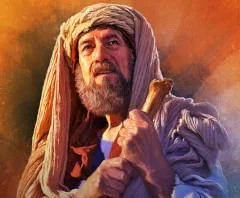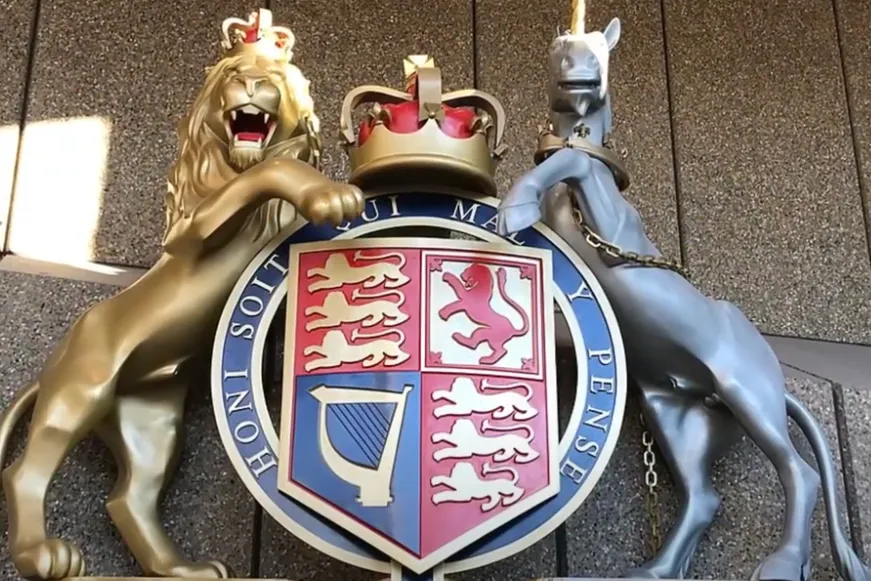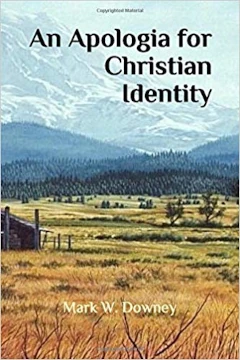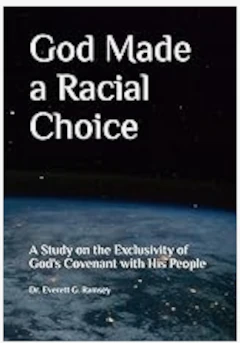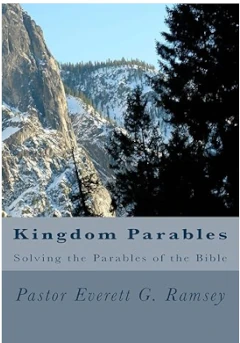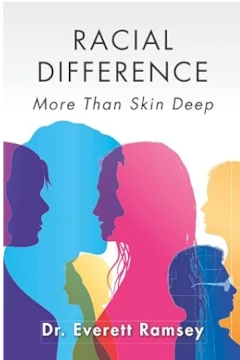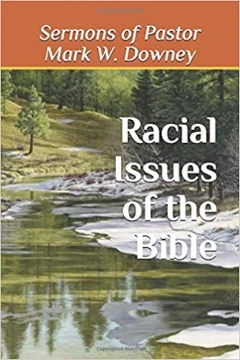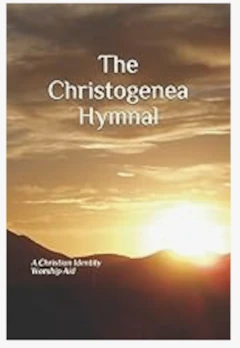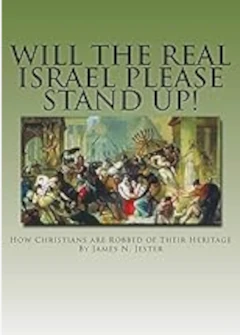Israelite Migrations - Part 1
THE CELTIC NATIONS
By Pastor Jim Jester
September 29, 2019
Scripture Reading: Genesis 10:1-5
“Now these are the generations of the sons of Noah, Shem, Ham, and Japheth: and unto them were sons born after the flood. The sons of Japheth; Gomer, and Magog, and Madai, and Javan, and Tubal, and Meshech, and Tiras. And the sons of Gomer; Ashkenaz, and Riphath, and Togarmah. And the sons of Javan; Elishah, and Tarshish, Kittim, and Dodanim. By these [men] were the isles of the Gentiles [nations] divided in their lands; every one after his tongue, after their families, in their nations.”
Currently, the adult Sunday School class of the Fellowship of God’s Covenant People is studying from Dr. Lawrence Blanchard’s “Bible Mastery Boot Camp”. This video training program is based upon his Covenant Heritage Series of books, one of which is Book Two, Identifying Biblical Israel Today.
Introduction
This lesson will be the first of a series of sermons that will glean some of the information that Dr. Blanchard has provided in Book Two, Section One: “Tracing the Migrations of the Israelites.” In this way, many who follow us on the web site can receive some of the benefits of the “Bible Mastery Boot Camp”, at least in the form of a summary or abbreviated version of it. We certainly endorse brother Blanchard’s work; and recommend that as many as are able to take full advantage of the “Bible Mastery Boot Camp”.
Genesis chapter ten lists how the nations were divided by the descendants of Noah. Noah had three sons: Japheth, Ham, and Shem. We read in our Scripture the list of Japheth. Verse 6 begins the list from Ham, and verse 21 begins the list from Shem. After each of these lists, the Scripture repeats, “…after their tongues, in their lands, after their nations” (or a close variation). Our reading of verse 5 was no different, except for the mention of the “isles”; or, as some translations say, “coastlands”, “sea-lands”, or “coastal peoples”, which is also appropriate. In this lesson, I want to talk about some of these isles.
What Are The Celtic Nations?
We have a colorful flag on our church wall that depicts 7 Celtic nations. Some, including myself, have wanted to know more about these nations – hence this sermon. I thought the information was interesting.
Celtic nations can be defined as nations where there is evidence of an existence of a Celtic language. In this context, “nation” does not mean a separate country; rather, “nation” denotes a territory with a distinct common culture and language.
The sole characteristic that defines all Celtic nations is the existence of a Celtic language. In this regard, six regions in the world are recognized as Celtic nations. These are Ireland (Irish language), Brittany (Breton language), Isle of Man (Manx language), Cornwall (Cornish language), Scotland (Scottish Gaelic language), and Wales (Welsh language). Of these Celtic nations, Scotland has the largest population of Celtic people, with over 1.9 million people who are competent in Scottish Gaelic, which represent 29.7% of the total population.
There are two branches of the Celtic languages still spoken, Brythonic and Goidelic. Brythonic is spoken in Brittany, Cornwall and Wales. Goidelic is spoken in Scotland, Ireland and Isle of Man. All areas have seen a revitalization and increased use of Celtic, which has been widely promoted by the Manx Heritage Foundation and Cornish Language Partnership. The Cornish and Manx languages were both nearly extinct in the past.
If asked to list the Celtic nations, most people could identify Ireland, Wales and Scotland. But there are at least three more. The other three Celtic nations are the Isle of Man, Cornwall (the southwest corner of England), and Brittany (the northwest region of France). Each of these nations has a strong Celtic identity and a distinct language that is still spoken to this day.
The history of Celtic languages predates Christianity and the Roman Empire as they were spoken in modern-day France and England back in the Iron Age. While all the Celtic languages exist, others such as Cornwall nearly became extinct but were saved through language revitalization movements.
It is often said, that there are 7 Celtic nations. The seventh is Galicia, in the northwest corner of Spain. Galicia has a strong Celtic identity, including stone circles and forts and the use of bagpipes in local music. Unlike the other six Celtic nations, however, no Celtic language has been spoken in Galicia since the Middle Ages. If ‘Galicia’ sounds familiar, it is because some of the Celts migrated to ‘Galatia’ (in Turkey). You will also recall that the Apostle Paul visited and wrote to the Galatians.
Northern Portugal, perhaps the 8th Celtic nation (Asturias), has cultural traits similar to Galicia, in the sense that there is a Celtic identity, but no Celtic language has continued into modern times.
The Celtic nations occupy the western edge of Europe; in fact, they are often called the “Celtic Fringe”. It is these areas that largely remained outside the reach of Roman influence during the Roman Empire.
Celtic Outside Europe
There are other countries in Europe, which are recognized as being of "Celtic heritage", and these countries include England, Spain, Portugal, Austria, Belgium, France, and Iceland. Celtic populations can also be found in regions outside Europe. Argentina has a significant population of Welsh people who are domestically known as the Y Wladfa. Welsh people arrived in Argentina’s Patagonia region starting in 1865. Other countries where Welsh people are found include the United States, Canada, Australia, and New Zealand.
In addition, there has been a revival of Scots Gaelic in Canada’s Cape Breton, once home in the 1800’s to 100,000 Gaelic speaking Scottish immigrants, with an estimated 2,000 Gaelic speakers in 2018.
Celtic Organizations
A movement exists amongst the official Celtic Nations that advocates for the cooperation and solidarity between the constituent nations, which is known as the Pan-Celtic Movement. Some factions in the Pan-Celtic Movement go as far as suggesting that Celtic nations form an independent federal state after seceding from France and the United Kingdom. The idea of a union of Celtic people was conceived by a Scottish scholar, George Buchanan in the 16th Century. However, the 18th Century was the time the Pan-Celtic Movement became outspoken in what was known as the Celtic Revival. Proponents of the movement saw the establishment of the Celtic Congress and oversaw the increased use of Celtic language in literature including the translation of the Bible into Breton. The Pan-Celtic Movement led to the establishment of Celtic studies as a field of study in academia. The Pan-Celtic movement witnessed its peak in the 19th and 20th Centuries, but its influence later declined considerably.
The Pan-Celtic Movement inspired the establishment of the Celtic League and the Celtic Congress, two organizations that are aimed at advancing the use of the Celtic language and revitalizing the endangered Celtic languages. Formed in 1961, the Celtic League calls for the establishment of an independent Celtic state made up of the six Celtic nations. The Celtic Congress is an organization formed in 1917 whose primary function is to promote the use of Celtic languages in the Celtic nations. Unlike the Celtic League, which is more of a political organization, the Celtic Congress is a cultural organization.
Flags of the Six Celtic Nations
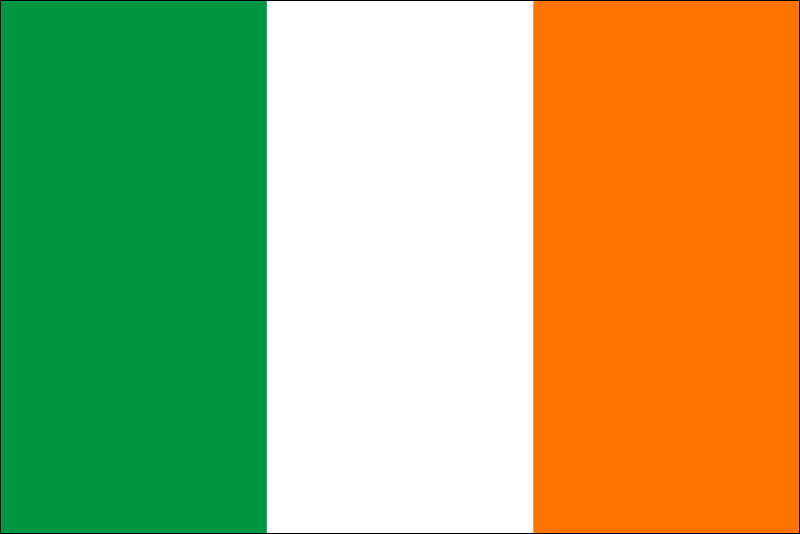 Ireland
Ireland
The Tri-color of Ireland is Green, White and Orange: The green for the country itself and the Irish people; the Orange standing for the Protestant followers of William of Orange, whose military forces defeated those of the Catholic Stuart Monarch James II; the white stands for the hope of conciliatory relations between both sides. At one time the tri-color (originating during the era of the French Revolution), was considered the flag of the Sein Fein; but from 1916 onwards it is now the flag of all Irish. An older green flag with harp was also at one point the national flag of Ireland.
 Isle of Man
Isle of Man
Man is an island in the Irish sea – once controlled variously by Scotland, Ireland and England (and now the British Crown) – it has the oldest recorded Parliament in Europe. The Manx language is closely related to Scottish Gaelic. The flag is a triskelion (common in other countries as well, it consists of three interlocking spirals or other images – interlocking spirals are an oft used motif in Celtic art) and as can be seen it features three armored legs with golden spurs over a deep red background. Based on an ancient Manx coat of arms it has been the official flag of Man since the early 1930’s.
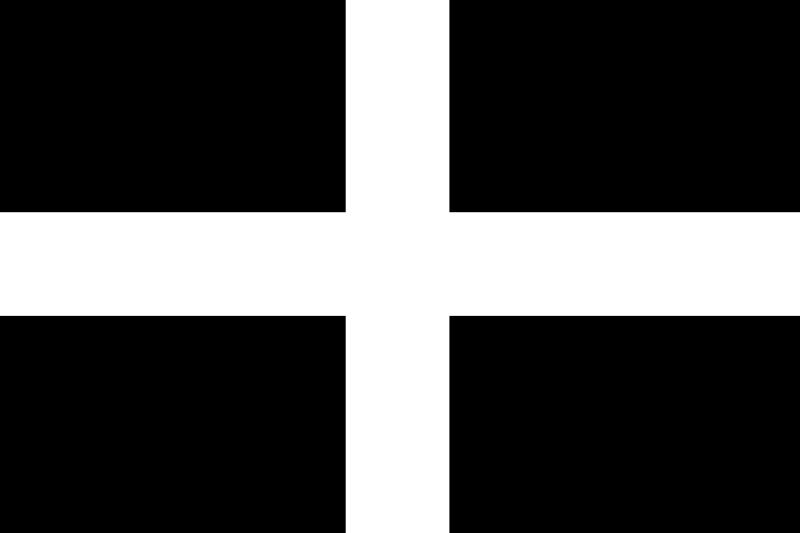 Cornwall
Cornwall
Jutting out on the low west coast of England, Cornwall has a rich history – often associated with the legends of King Arthur. The Cornish language while now dead is getting a bit of a renaissance as the interest in Cornwall’s ancient history grows. The flag has been called the banner of St. Perran and the Standard of Cornwall. The legend goes that the black symbolizes the black ore and the white the bright silver color of molten tin that St. Perran witnessed being smelted.
 Scotland
Scotland
The Saltire – the national flag of Scotland is one of the oldest in the world. It is also occasionally known as the Banner of Scotland. There is a legend that St. Andrew, the patron saint of Scotland, was crucified on an x-shaped cross – hence the flag. Another legend refers to a 9th century battle between a combined force of Picts and Scots, led by the Pictish king Óengus, against invading Angles. During the battle, a white cross supposedly appeared in the bright blue sky, inspiring the Pictish/Scots warriors and leading them to victory.
 Brittany
Brittany
The flag of the Bretons is a modern (20th Century) invention and design, though there are older elements in it. The French have long tried to suppress any cultural and lingual distinctions of the Celtic Bretons (descendents of Celtic Britains who fled their island from invading Romans and settled in what is now France), and the flag was at first thought to have been seditious, but is now recognized and accepted as a representation of the Breton folk.
The nine horizontal stripes represent the traditional dioceses of Brittany. The five black stripes indicate the French speaking areas, while the four white stripes represent the Breton speaking regions. The flag has a canton in the upper left corner, indicating an ancient Breton coat of arms.
 Wales
Wales
The Welsh flag consists of the Red Dragon of Cadwaladr, and the Tudor colors: green and white (the Tudors were the Welsh descendant kings of England). The dragon has long been a symbol of the Welsh, and has been both associated with Arthurian Legend and perhaps Roman-Britain unity. There is also a tale that the dragon represented the Celtic victory in battle and ascendance over the invading Saxon (symbolized in this legend as being a white serpent overcome by a red one).
 Flag of the Six Celtic Nations:
Flag of the Six Celtic Nations:
This is the newer Celtic Nations flag since the 7th and 8th nation (namely, Galicia and Asturias) no longer have a population that uses a Celtic language. [A combination of the above flags.]
The Triskelion
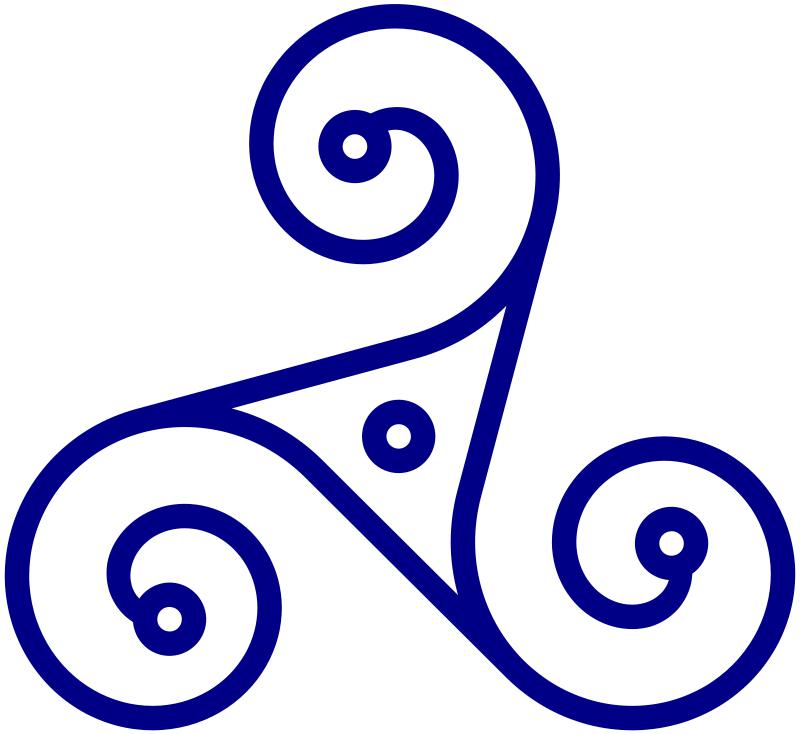 A triskelion or triskele is a motif consisting of a triple spiral exhibiting rotational symmetry. The spiral design can be based on interlocking Archimedean spirals, or represent three bent legs. We see two examples on this flag.
A triskelion or triskele is a motif consisting of a triple spiral exhibiting rotational symmetry. The spiral design can be based on interlocking Archimedean spirals, or represent three bent legs. We see two examples on this flag.
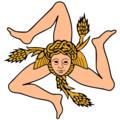 Pliny the Elder attributes the origin of the triskelion of Sicily to the triangular shape of the island.
Pliny the Elder attributes the origin of the triskelion of Sicily to the triangular shape of the island.
Though popularly considered a “Celtic” symbol, it is in fact a pre-Celtic symbol. It is carved into the rock of a stone lozenge near the main entrance of the prehistoric Newgrange monument in Ireland. Newgrange, which was built around 3200 BC, predates the Celtic arrival in Ireland, but has long since been incorporated into Celtic culture. It is older than Stonehenge and the Egyptian pyramids.
 The triskelion has a wide variety of uses:
The triskelion has a wide variety of uses:
The seal of the U. S. Department of Transportation
 “The Afrikaner Weerstandsbeweging, meaning Afrikaner Resistance Movement, commonly known by its abbreviation AWB, is a South African neo-Nazi separatist political and paramilitary organization, often described as a White Supremacist group.
“The Afrikaner Weerstandsbeweging, meaning Afrikaner Resistance Movement, commonly known by its abbreviation AWB, is a South African neo-Nazi separatist political and paramilitary organization, often described as a White Supremacist group.
The AWB flag is composed of three black sevens forming a triskelion in a white circle upon a red background, resembling the flag of Nazi Germany. According to AWB, the sevens, 'the number of final victory', 'stand to oppose the number 666, the number of the anti-Christ'. Red is considered to represent Jesus’ blood and the struggle of the Christians, while black stands for bravery. The inner white circle symbolizes "purity" and "eternal life". – Wikipedia
The Origin of the Celts
It is said that the Celtic tribes migrated to the isles of the west soon after the Flood of Noah (2000-3000 BC).
“They probably originated from Central Europe, during the late second millennium BC (late Bronze Age). Traces of their earliest existences can be found in Austria, Germany and France. They established the Late Bronze/Iron Age culture called the Hallstatt in Austria during the 9th or 8th century BC. When the Iron Age Hallstatt began to displace the Bronze Age Hallstatt, a rich, flourishing trade existed between the Greeks and the Celtic tribes living in the region of Bavaria to Bohemia.
The Greeks called them Keltoi; the name has its root probably in the 5th century BC. While the Romans called them Galli, which is the ‘Gauls’.
Greek and Roman authors frequently interchange Celts with Gauls and Galatae.” – Who Were the Celts?, timelessmyths.com
Geoffrey Keating in A General History of Ireland, says that the original inhabitants of Ireland arrived about 2051 BC consisting of 1,000 warriors led by a man named Parthalon, who came from Greece. Parthalon was contemporary with Abram’s father. Dr. Blanchard comments, “At the same time that God was preparing to begin the story of His covenant relationship with Abram and his descendants, God was also, from the same family line of Shem, building another Hebrew nation in Ireland.” This is confirmed by other historians:
“There appears to be no doubt that the first inhabitants of Ireland were derived from the same Celtic stock which supplied Gual, Britain and Spain with their original population… there exists… strong evidence of an early intercourse between Spain and Ireland.” – Collins, Israel’s Lost Empires, p 103, quoting Thomas Moore, History of Ireland, p. 3
“The people who were later named Iberians… by the Greeks, migrated to Spain in the third millennium BC… archaeological evidence of their metallurgical and agricultural skills supports a theory that they came from the eastern shores of the Mediterranean Sea.” – The Library of Congress – SPAIN – A Country Study.
Ireland and Spain were both originally called “Ibernia” or “Iberia”, which comes from the Hebrew name “Heber”, that comes from Eber, the great, great, great, grandfather of Abraham (Gen. 11:16-26). [For more information see Dr. Blanchard’s, “Book Two”, Appendix F]
The word ‘Celt’ has its origin in the word ‘Chaldee’. “…I am the LORD that brought thee [Abram] out of Ur of the Chaldees, to give thee this land to inherit it” (Gen. 15:7). Similar sounding names were used in other countries, such as: Keltoi, Gauls, Galatae, Goths, etc.
Celtic Myths
Most of early Celtic history cannot be proven because it lacks verifiable documentation and some of it falls into tradition and mythology.
Celtic myths were preserved through oral tradition. Bards would compose and then recite the stories in verses. The Irish sagas were not written down until the twelfth century AD by monastic scholars.
The majority of the literature of Celtic myths comes from the Irish and Welsh, and to a lesser degree from the Scots. No literature survived from Cornwall and Brittany. Breton literature on myth and legend survived only through the writings of the French.
There are two main documents used to trace the history of Ireland:
- The book titled Lebor Gabala Erren – the “Book of Invasions of Ireland”. It contains the stories of successive invasions and settlements of the Celtic people in Ireland. Five or six different people settled on the Isle.
- The other main source comes from Cath Maige Tuired – the “Second Battle of Tuired”, which is mainly centered on the Tuatha Dé Danaan.
One example of a Celtic “myth” (although it is possible that parts of it may be true) is in the story of the first invasion of Ireland from the “Book of Invasions”:
“Cesair was the leader of the first invasion in Ireland. Cesair was the daughter of Bith and granddaughter of Noah. Cesair was denied admission to the Ark, so she left 40 days before the Flood arrived.
Cesair arrived at Dun na mBarc (in Co. Cork), Ireland, with 50 other women, and three men. She married Fintan Mac Bochra. The three men were to divide the women among them, as well as dividing Ireland into three. They hoped they could populate Ireland, but two of the men died.
When the fifty women all turned their attention to Fintan, he saw that they were placing too much responsibility on him, so he fled from Ireland, by turning himself into a salmon. Cesair died from a broken heart. Without a single man on the isle, the other women also perished.”
Obviously, not all of this is true; and much of Celtic history is like this.
The following is a list (from Book of Invasions) of the various groups of Celts, excepting the Fomorians (serpent seed?) that dominated Ireland:
- The Partholanians – 2051 BC (300 yrs.)
- The Fomorians (violent and oppressive, non-Celtic, 30 yr. period)
- The Nemedians – 1721-1504 (216 yrs.)
- The Fir-Bolgs – 1504-1468 (36 yrs.)
- The Tuatha Dé Danaan – 1468-1271 (197 yrs.)
- The Milesians – 1271 BC and onward
(Dates from A General History of Ireland)
Let us move on to some of Dr. Blanchard’s input from “Book Two” of his Covenant Heritage Series.
Pre-Exodus Migration
A migration of Israelites under the leadership of Darda (I Ki 4:31). Darda was a descendant of Judah’s son Zerah (I Chro 2:6). The combined information from I Kings 4:31 and I Chronicles 2:6-8, shows that Darda was Zerah’s great-grandson.
Darda established the city of Troy approximately 1527 BC, 34 years before the Exodus. The date of the Exodus was 1493 BC (Note: Adam Rutherford date, Anglo-Saxon Israel or Israel-Britain, London, 1939). This means that some Israelites were leaving Egypt ahead of the main exodus of the Israelite nation under Moses.
The royal lineage of all the Northwest European kings comes from Woden. His genealogy traces back to Darda of Troy, including the kings and queens of England.
According to genealogist Alfred S. Schumuhl, who documented The Royal Line, 1936, Dardanus of Troy was born in Ramses, Goshen (the land in Egypt where only the Israelites lived). He was born about 215 AD. Dardanus or Darda is never mentioned again in the Bible as part of Israel’s history after the exodus. He disappeared from biblical history and abruptly appeared in secular history at the same time.
Simultaneous with the Exodus
Two expeditions (in the same year of the Exodus, 1493 BC) of Israelites under the leadership of Cadmus and Danaus into Greece.
Post-Exodus Migrations
The Tuatha de Danaan (descendants from the tribe of Dan), from Greece to Ireland, 1468 BC.
The Milesians migrated from Egypt to the Black Sea area, then to Spain, then to Ireland, 1271-1053 BC. The book of Numbers (21:4-9) reveals, a possible split within Israel (before 1453 BC). A comparison of the first and second census (chp. 1 and chp. 26) indicates a significant drop in the population of 5 tribes, whereas, the other tribes gained population.
The Milesians called themselves “Iberians” (from which the word “Heber” or “Hebrew” comes). This is revealed in The History of Ireland by Mitchell, p. 62. Some historians disagree on some of the dates, but they all agree that the arrival of the Milesians was when Israel crossed the Red Sea.
Migration of Israelites to Britain
Here we pick up with Darda again. As we saw previously, he founded the city of Troy. Troy was destroyed in 1183 BC. While it was being destroyed, Darda’s great-great-great grandson Anchises fled Troy with his son Aeneas, went to Italy, and settled there. Aeneas married the king’s daughter and their great-grandson was named Brutus. The history of Brutus is documented by Jeoffrey of Monmouth and the Welsh Chronicles.
Due to some unfortunate circumstances, Brutus was exiled from Italy. Brutus first went to Greece where he met up with some slaves whose ancestors were also from the Trojan War. After electing him as their leader, they defeated their captors and sailed out of the Mediterranean Sea through the Pillars of Hercules. Along the way, they met up with another group of former Trojans, led by Corineaus, who had also escaped from their captors.
“They combined forces and landed in Gaul with Brutus being acclaimed as their overall king … The Trojans again set sail, and came ashore at Totnes in Devon at some time in the 12th century BC. The land and its people were subsequently to derive their names from Brutus. Then Brutus founded the city of Trinovantum, or New Troy, which was later to become the city of London. Brutus, the first king of the Britons, reigned over his people in this island for twenty-three years, i.e. from 1104-1081 BC.” – After the Flood, Bill Cooper, 1995, p. 70-71
Just think of this: here we have Brutus, an Israelite king, who is ruling in Britain in 1103 BC, six years before Saul became the first king of Israel in 1097 BC. They were contemporaries.
“It is well known, that Jeffrey of Monmouth, who diffused in the twelfth century that history of Britain which in former times so much occupied the public mind, deduces the first colonization of Britain from a Trojan source; from Brutus, the son of Aeneas, who after wandering through the sea, and landing in Gaul, finally settled in this island, The same story is in the Welsh Chronicles…” – The History of the Anglo-Saxons, Vol. 1, Sharon Turner, p. 60
The coming of Brutus to BrItain links yet another migration of Israelites into Britain. Even his name quite telling: “Brutus” = “British” and means “Covenant Man” in Hebrew. “Britain” means “Land of the Covenant.” Could this be the same covenant that God made with Abraham and his descendants? Could anyone tell me why not?
This has only been the earliest of the migrations since we are considering the Celtic Nations. From 841 BC to 64 BC, there were many more migrations of Israelites that not only involved these nations but other parts of Europe and Asia as well. [This will be covered later.]
Conclusion
When it comes to the migration of the tribes of Israel, most typical judeo-Christians would say, “I’ve never heard of such a thing before.” They would dismiss all this evidence as a “conspiracy theory” or a cultish disproven doctrine. However, just because they have never heard of Israelite migrations before does not mean it is not true. It only means the evidence has been withheld from them. Instead of denying the historic facts, they should be asking their pastor/priest, “Why have I not heard about this?” Today’s ‘Jews’ are not the ancient Israelites – that is a myth. Judeo-Christians ought to be able to see this.
… to be continued

